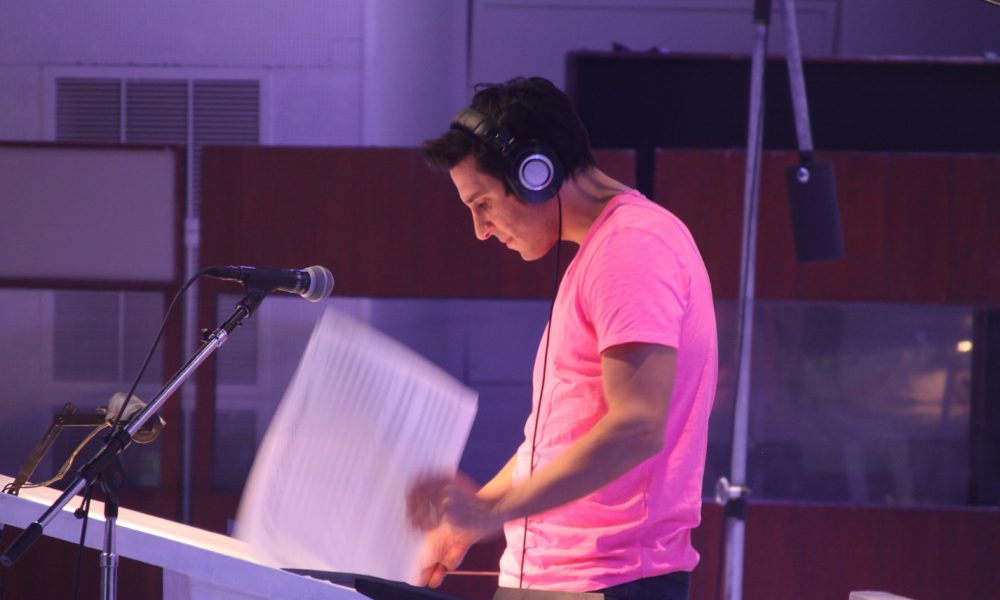When it comes to creating a good horror film, there are several elements that need to align perfectly. One of the essential components is the score. Just like in John Carpenter’s iconic Halloween or Bernard Hermann’s spine-chilling Psycho, a memorable horror score can act as another main character in the film. Recently, Tom Botchii’s Artik has joined the ranks of movies with an exceptional score, composed by Corey Wallace and released by Notefornote Music. Let’s take a closer look at what goes into crafting a memorable horror score and Wallace’s creative process for Artik.
The Terrifying Opening Credit Music of Artik
Even listening to the Artik opening credit music without watching the screen can send shivers down your spine. The score is intentionally designed to establish a sense of uneasiness and keep the audience on the edge of their seats. According to Wallace, the main titles cue aims to set the tone for the entire film, introducing themes, sounds, style, and emotions that viewers can expect throughout. The eerie and unsettling nature of the Artik Main Titles is achieved through disturbing creepiness, surprising jagged edges, and an overall sense of foreboding. The ticking pulse in the piece feels like the ominous footsteps of a disturbed force approaching. Interestingly, Wallace initially started working on a different suspense scene, but when director Tom Botchii heard the pulse, he recognized its potential to become the main titles cue. This unique collaboration resulted in the compelling animation by Behnam Merabiani, which synchronized with the score’s rhythm, creating a chilling visual experience.
The Intense Journey of Scoring an Intense Film
Scoring an intense and bloody film like Artik comes with its own set of challenges. Wallace reveals that he does take frequent breaks while working on such projects, but not necessarily to clear his mind from the gore and violence. Surprisingly, he explains that getting too accustomed to the violence can hinder the scoring process. By taking breaks and allowing himself to forget the emotional impact of specific cues, Wallace can assess their effectiveness when he returns to them. In fact, scaring himself when he re-engages with a cue is a reliable indicator that the music is successfully evoking the desired response. This also highlights the importance of timing and attention to detail in horror film scoring. Even the smallest sounds and subtle moments can be terrifying if prepared well and timed correctly.
Building Dread and Fear through Music
In horror films, the score plays a crucial role in signaling when something bad is about to happen. For example, in Artik, the score sets up a sense of dread in scenes like the first death scene on the side of the road. Wallace emphasizes that establishing this overall sense of dread and fear from the beginning of the film is vital for maximum impact. The Main Titles play a significant role in communicating to the audience that something terrible is looming, creating tension and anticipation. As the film progresses, the score intensifies when specific moments call for it. In the mentioned scene, the music kicks in when Artik distances himself from the kind stranger offering help with his engine. This scene’s musical cues work hand in hand with the visual storytelling, subtly guiding the audience without giving away too much. By aligning the movements of the camera with the score, the filmmakers reinforce the dramatic significance and amplify the impending violence.
The Integration of Score and Sound Design
During the post-production process of Artik, the score and sound design became intimately intertwined. The final mix and sound design were skillfully executed by Josh Eckberg at a Warner Bros. mix stage. The fusion of the score and sound design completes the immersive experience for the audience. For Wallace, hearing the sound design alongside the score felt like witnessing Artik for the first time. Eckberg’s expert touch added atmospheric ambiance, compelling bass sounds, and a dreadful sonic mist over scenes, enhancing the gritty and forward sounds of the score. Collaboration and communication between the sound and music departments were vital to ensure a seamless integration. Unfortunately, due to budget constraints and tight deadlines, such collaborations are not always possible. In these cases, it becomes crucial for the director to have a clear vision of which moments should stand out musically and which ones should be left for the sound design, ensuring that both elements work harmoniously to deliver a cohesive and impactful film.

